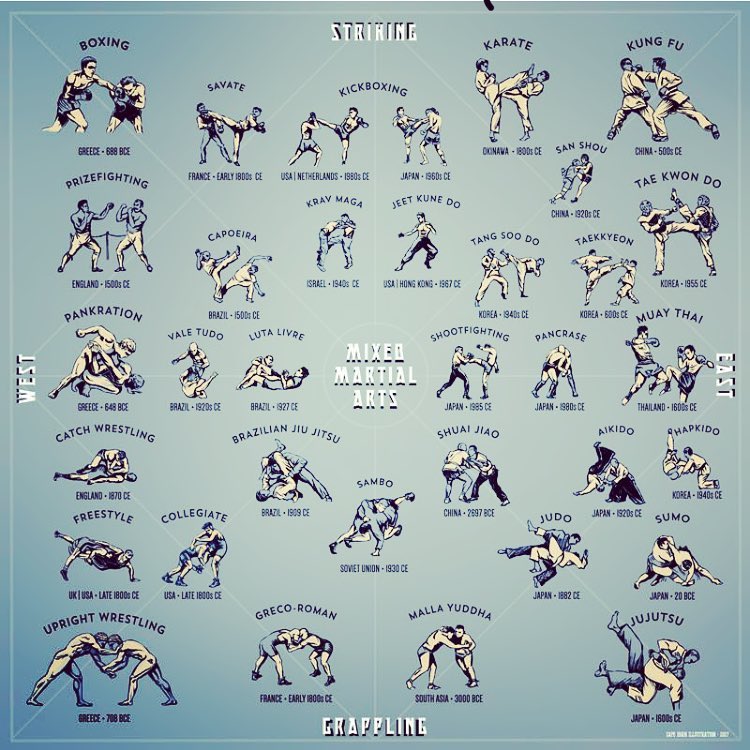A Historical Overview And Progression Of Martial Arts Around The World
A Historical Overview And Progression Of Martial Arts Around The World
Blog Article
Short Article Composed By-Winkler Vick
Martial arts have a remarkable history that covers centuries and continents. You might find it fascinating exactly how old techniques like Shuai Jiao and Kalaripayattu prepared for contemporary battle techniques. These disciplines not just emphasize physical abilities but also mirror the societies that birthed them. As you explore their advancement, consider exactly how globalization has actually transformed these conventional types into hybrid styles. What influences do you assume have formed today's martial arts landscape?
Ancient Martial arts: The Structures of Battle
As you look into the globe of old martial arts, you'll discover the rich foundations that formed fight strategies across societies. Early methods concentrated on Self-Defense and survival, frequently incorporating strikes, hurting, and weapons.
In ancient China, for example, techniques like Shuai Jiao stressed tosses and joint locks, while India's Kalaripayattu showcased dexterity and liquid motion. Japanese samurai created Kenjutsu, a polished swordsmanship that highlighted technique and technique.
These martial arts served not just for fight yet also as a means of individual growth, instilling worths like respect and perseverance. The blending of these strategies in time prepared for the diverse martial arts you see today, each showing the one-of-a-kind ideologies and requirements of its society.
The Cultural Influence on Martial Arts Growth
While martial arts usually mirror the sensible demands of a society, they additionally embody the social worths and ideas of their origins. When you explore various martial arts, you'll discover exactly how they're affected by religious beliefs, ideology, and social norms.
As an example, the focus on regard and discipline in Japanese martial arts stems from Zen Buddhism and samurai society. In contrast, Brazilian Jiu-Jitsu advertises adaptability and approach, shaped by the requirement for effectiveness in a diverse, modern atmosphere.
You may discover that the rituals, uniforms, and training techniques mirror a community's history and identity. By recognizing these cultural impacts, you strengthen your admiration of martial arts and their function fit human experiences around the world.
Modern Adaptations and the Globalization of Martial arts
Martial arts have actually changed considerably in recent years, adjusting to contemporary society and global impacts. You'll notice that conventional forms have combined with modern-day techniques, creating hybrid styles like MMA. These adaptations deal with diverse audiences, making martial arts obtainable and enticing globally.
With simply click the following internet page of social media sites and electronic systems, you can discover tutorials and competitions from all corners of the world, damaging geographical obstacles. This globalization has resulted in a shared gratitude for numerous techniques, from Brazilian Jiu-Jitsu to Taekwondo.
As you involve with these arts, you'll realize they're not practically battle; they promote health and fitness, discipline, and mental health.
Ultimately, modern-day adaptations have enriched the martial arts landscape, making it a dynamic and progressing practice.
Final thought
In discovering the history and development of martial arts, you discover an interesting blend of techniques, societies, and ideologies. From old techniques like Shuai Jiao and Kalaripayattu to the contemporary versatility seen in MMA, martial arts mirror humanity's quest for Self-Defense and individual growth. As martial arts with belt systems engage with these practices, you not only get skills yet likewise a much deeper appreciation for the varied traditions that form our globe today. So, continue your trip and embrace the art of combat!
